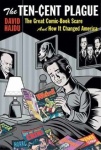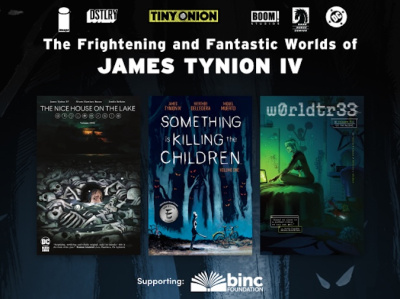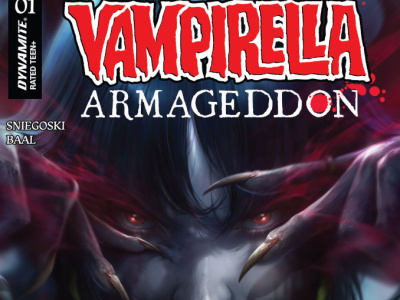
Reviews in a number of high profile venues are paving the way for a strong initial sale of The Ten-Cent Plague, a history of the attack on
And in the March edition of Wired, a nearly full-page feature on the title finds parallels between the comics of the early fifties and videogames today, with "intense gore, inventive mayhem, and sociopathic behavior."
The events described in the book took a comic publishing industry that was selling 80 to 100 million comics a week in the 1940s to one a tiny fraction of that size a few years later. Even today, in a period generally felt to be one in which the influence and sales of comics have grown from their depths to something approaching respectability, all the comic stores in the U.S. and Canada sold less than seven million comics in the month of January. And while comics in the
The destruction of the
The book does a good job of noting the destruction of careers that followed the purge, incorporating a 14-page list of comic creators who never worked in comics again after it, and using the story of Janice Valleau Winkleman, an 11-year veteran of Quality Comics who not only quit the business after the purge but hid her involvement in it for most of the rest of her life, as prologue.
David Hadju, the author, has previously looked at other categories of pop culture, with two books on 20th century musicians to his credit before this title.
The Ten-Cent Plague is not only a good review of what happens when censorship runs amok (we suggest you donate to the Comic Book Legal Defense Fund as one way of fighting such misguided efforts, click here for more info), but also presents an opportunity for retailers to give their customers some background that explains why comics are what they are today.







